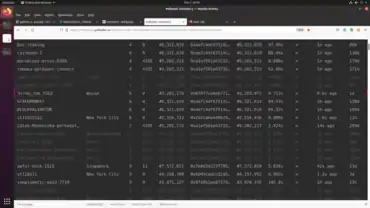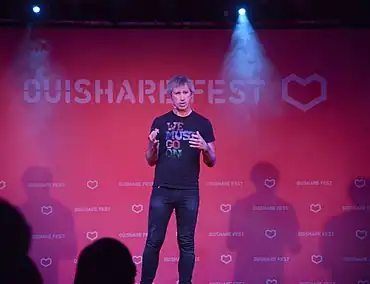 | |
| Denominations | |
|---|---|
| Code | DOT |
| Subunits | |
| 100 Planck | Planck |
| 104 Planck | Microdot (uDOT) |
| 107 Planck | Millidot (mDOT) |
| 1010 Planck | Dot (DOT) |
| 1016 Planck | Million (MDOT)[1] |
| Development | |
| Original author(s) | Gavin Wood |
| White paper | https://polkadot.network/PolkaDotPaper.pdf |
| Implementation(s) | polkadot, gossamer |
| Initial release | May 26th, 2020 |
| Code repository | github |
| Development status | Active |
| Ledger | |
| Timestamping scheme | Proof of stake |
| Website | |
| Website | polkadot |
Polkadot is a blockchain platform and cryptocurrency. The native cryptocurrency for the Polkadot blockchain is the DOT.[2] It is designed to allow blockchains to exchange messages and perform transactions with each other without a trusted third-party. This allows for cross-chain transfers of data or assets, between different blockchains, and for decentralized applications (DApps) to be built using the Polkadot Network.[3]


History
The protocol was created by the Ethereum co-founder Gavin Wood,[4] Robert Habermeier and Peter Czaban,[5] raising over $144.3 million in its Initial coin offering in October 2017.[6] Another private sale in 2019 raised an additional $43 million.[5] The white paper for Polkadot was published by Wood in 2016.[5]
Polkadot's initial block (the "genesis block") was released in May 2020.[7] The DOT is its native token, and DOTs were released with the launch of the genesis block.[5]
Technical details
The Polkadot network has a primary blockchain named the "relay chain" and many user-created parallel chains called "parachains". The relay chain acts as the governance layer of the network, while parachains are auctioned, enabling users to create and operate their own blockchains that use Polkadot's infrastructure.[8] The relay chain is responsible for validating data, achieving consensus and executing transactions. It is estimated that 1,000 transactions per second can be processed by the network.[5]
Proof of stake
The network uses a nominated proof-of-stake consensus algorithm.[9] The protocol used, Blind Assignment for Blockchain Extension (BABE), is derived from Ouroboros, a protocol created by Aggelos Kiayias.[10]
Bridges and Parathreads
The Polkadot network contains bridges, which connect blockchains and allow data transfer. Bridges provide interoperability with other blockchain networks. Parathreads operate in a similar manner to parachains but follow a "pay as you go" model, not requiring continuous connectivity to the Polkadot network.[5]
See also
References
- ↑ Ferran, Taylor. "Pokadot(DOT)". polkadot. Retrieved 28 Jan 2023.
- ↑ "Ethereum Blockchain Killer Goes By Unassuming Name of Polkadot". Bloomberg. October 17, 2020. Retrieved July 14, 2021.
- ↑ "True interoperability". Polkadot. Retrieved 13 Feb 2022.
- ↑ Vigna, Paul (March 3, 2022). "How Bitcoin and a Crypto Exchange Became Part of Ukraine's War Effort". Wall Street Journal.
- 1 2 3 4 5 6 "About Polkadot, a platform for Web3". PolkadotAbout. October 17, 2017.
- ↑ Butcher, Mike (October 17, 2017). "Polkadot passes the $140M mark for its fund-raise to link private and public blockchains". Techcrunch.
- ↑ "Polkadot Network". Polkadot Network. Retrieved 2022-08-08.
- ↑ Waters, Richard (31 December 2020). "What did Silicon Valley's crypto bubble create?". Financial Times.
- ↑ Piven, Ben (13 May 2021). "After Musk Bitcoin U-turn, which coins are more climate friendly?". www.aljazeera.com. Retrieved 5 July 2021.
- ↑ Kiayias home page at University of Edinburgh